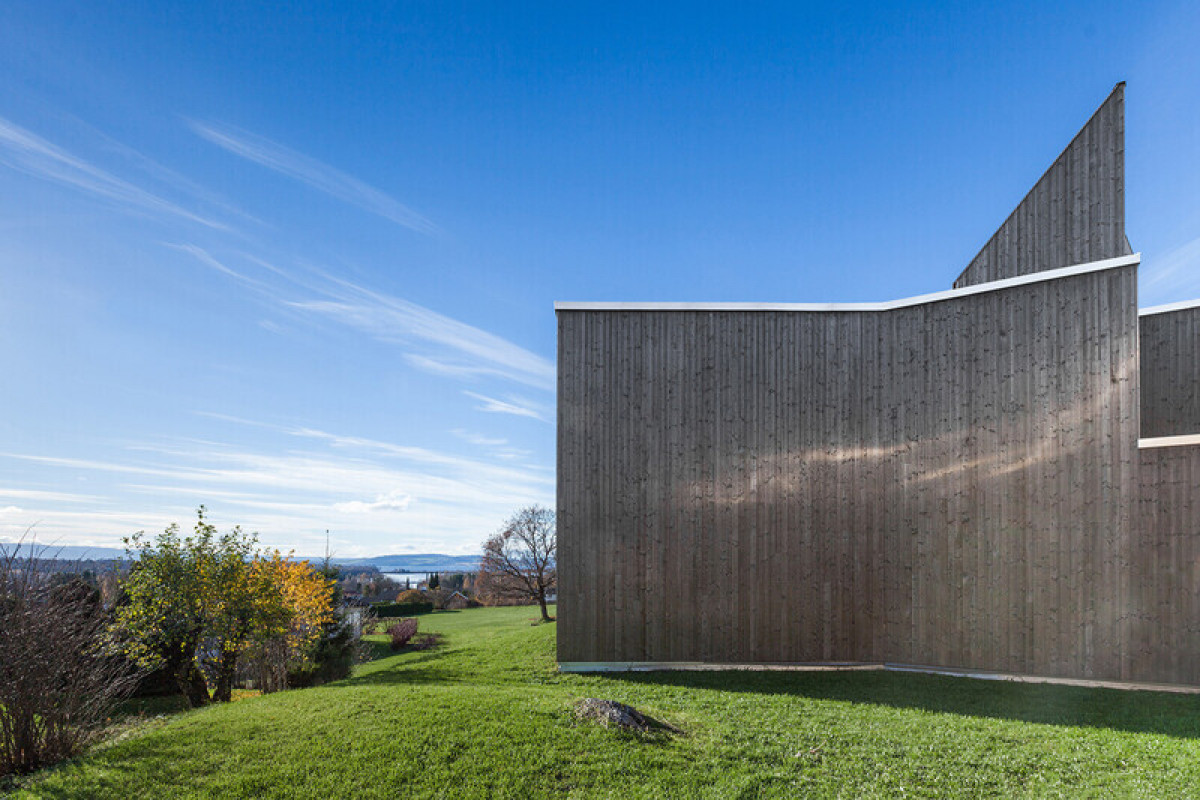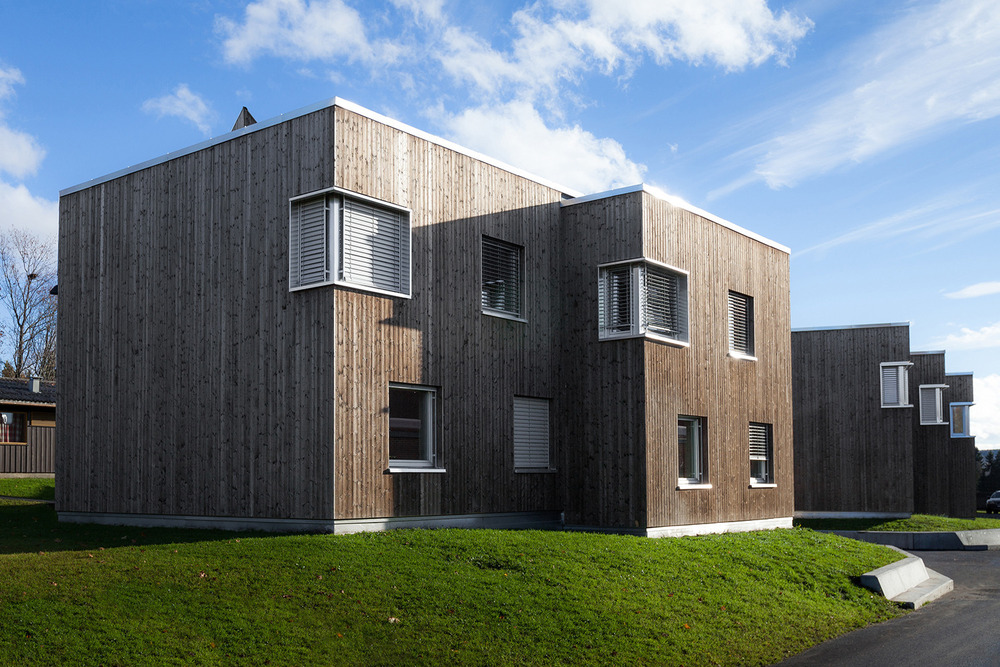25 Jul 2023

ASAS arkitektur introduces a new student housing project, built to replace existing housing at Toneheim Folkehøgskole, just outside the city of Hamar, Norway. The small wooden village has been erected around a common yard, which is a Norwegian traditional typology called “tun”. The new village-like structure is vernacular and deeply rooted in the site and history.
Also Read | 10 kitchen design ideas inspired by farmhouse style

Concept
The idea behind the structure is one simple building block, repeated and varied according to its placement on the site and its orientation. Through this principle, the terrain is left mostly as is, with every building block given an accessible entrance. Each building block consists of five 2-person bedrooms, a common room with a kitchen and lounge, and bathroom facilities. The common rooms and the entrance zones are all oriented towards the common yard. Every student passes the common room on their way in and out of the building, which stimulates interaction between students. The 2-person rooms put restrictions on the amount of private space, encouraging students to interact with each other in the common areas.
Also Read | Beginners guide: Creative ideas for styling your new living space
Flexibility and efficiency
The plan is compact, with efficient buildings in terms of space, energy, and economics. The flexible bedroom plans can be furnished in a multitude of ways, and are also wheelchair accessible. Storage space in the bedrooms is maximized, with space both underneath the bed and in a wall niche located above each bed.
Also Read | How to select a dinnerware set that matches your home decor?
Multipurpose stair tower
The stairs are integrated into the common room and create a smaller, more private space within the common room. In these small, intimate rooms, students can read or make telephone calls. Spaces that the stairs create establish connections between private and social spaces, as well as connections between the interior and exterior. The stair tower is also an important internal and external element in terms of the shape of the house, and an important environmental element, with skylights in the stairwell contributing a generous shower of daylight along the walls.
Also Read | Tips to care for your houseplants this winter
Landscape
The common rooms are all oriented towards the new common yard. To ensure that the big, open space functions well, new in-between zones have been introduced. The in-between zones consist of smaller spaces between the yard and the entrance zones to the different rooms. These smaller spaces are furnished with benches and robust plants, and they connect to walking axes through the area. Natural spaces to meet and spend time have also been created in the yard, with a variety of unique qualities and connections to the entire project.
Also Read | Timber hybrid office ensemble EDGE Suedkreuz Berlin
Small outdoor benches have been established in the façade of the buildings and connect the common rooms inside with the yard. Tactile attention zones and guiding lines are integrated into the walking paths to ensure orientation for the visually impaired. The bedrooms in the houses in the south and the west have an astonishing view towards rural Stangelandet, and the bedrooms to the northeast have views towards the Vang Kirke church.
Fruit trees and robust bushes requiring very little maintenance are preferred in the “tun”, including Juneberry, which flowers in the spring and provides berries in the autumn. Katsura trees and pines have also been planted between the student housing and the neighbouring houses, creating a veil of autumn colours and interesting leaf shapes.
Also Read | Kareena Kapoor Khan’s new home in Bandra with European styled decor & wooden detailing
To maintain traffic safety, a tactile zone is marked up where the walking paths cross the street between the school entrance and the student housing.
Construction and materials
The buildings are made of wood and concrete, with concrete constructions based on element production to reduce the building time. All buildings are passive houses with mainly wooden, pre-fabricated constructions as primary elements. Massive wood is used for the inner walls and external spruce cladding, providing the buildings with a grey patina as they age. The chosen construction concept reduced the building time and improves the indoor climate.
Also Read | Shiro Kuramata’s Samba-M shines again with Ambientec at the supersalone in Milan
Environment: climate and energy
The student housing is designed according to the passive house standard. A compact plan and a chained building structure provide smaller facades, thus limiting the loss of heat from the building blocks. All windows have very low U-values and can also work as sun catchers for heat at the time of day and year when it is feasible.
Wellbeing
The new village and tun is a place where students, teachers, and others can thrive, both inside and outside. It is a place where traditions meet modern architecture, with an accent of personal expression. In effect, it is well-being architecture.
Also Read | Arabic Resin art decor launches by Artist Madhavi Adalja
Technical sheet